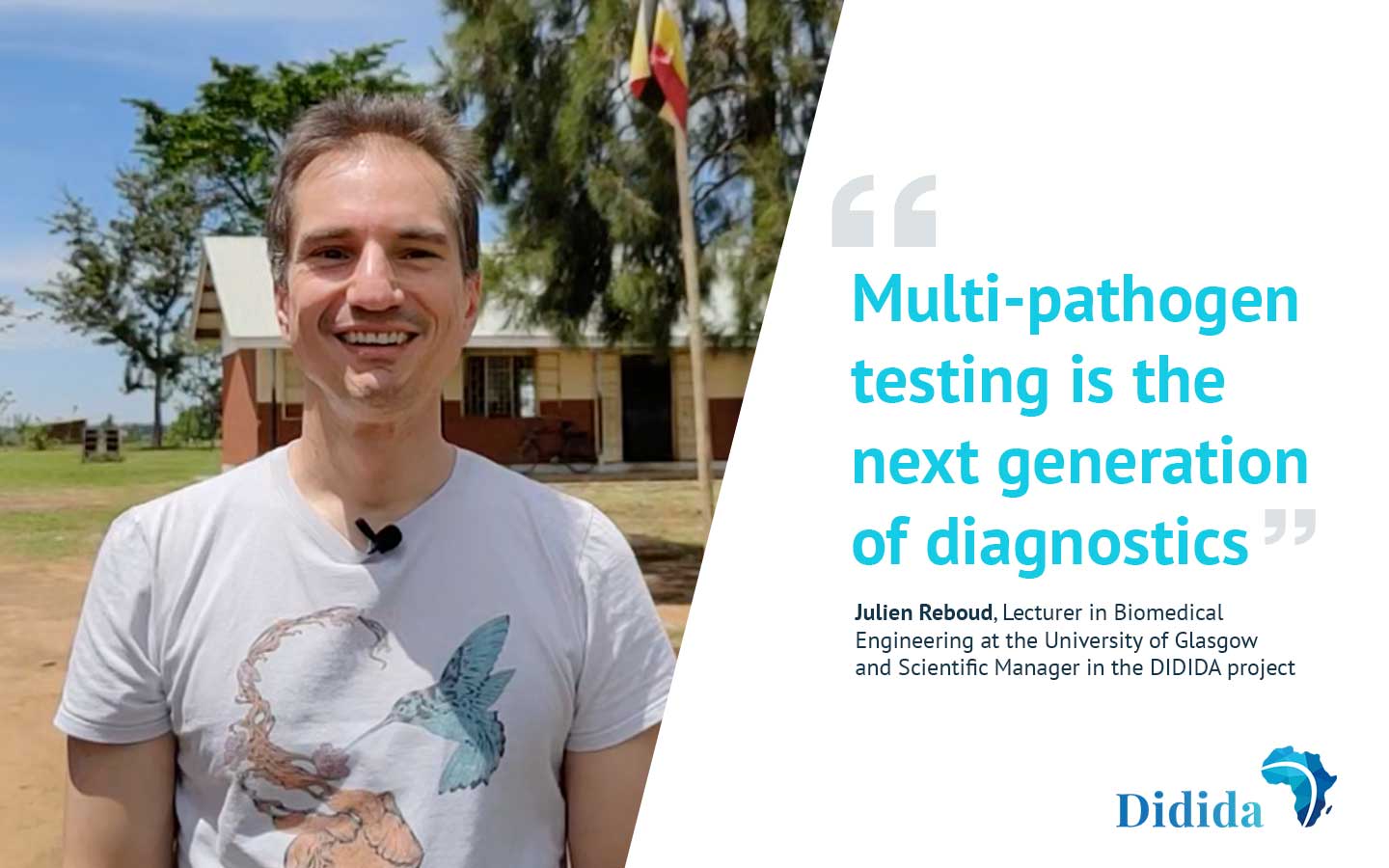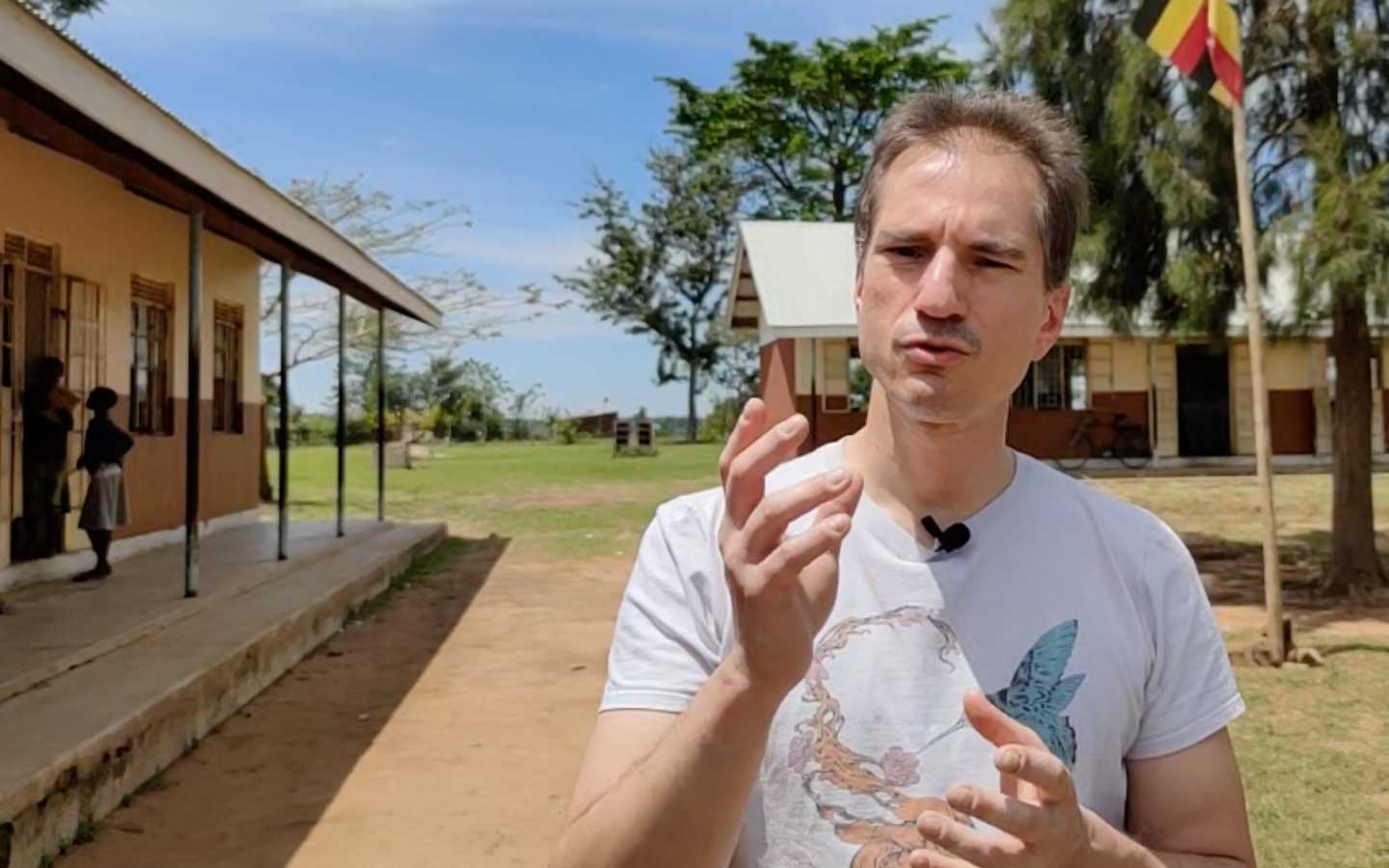Multi-pathogen testing is the next generation of diagnostics
In this interview, Julien Reboud, Lecturer in Biomedical Engineering at the University of Glasgow and Scientific Manager in the DIDIDA project, talks about the possibilities of lateral flow formats in multi-pathogen testing to improve healthcare in Sub-Saharan Africa.
Julien Reboud during a mission to Kenya in March 2023 for the DIDIDA project.
Why can we think of multi-pathogen testing as the next generation of diagnostics?
Julien Reboud: I fully agree that multi-pathogen testing is the future of diagnostics, following the comment of Bill Rodriguez, CEO of FIND, the global alliance for diagnostics, in The Telegraph. This innovative approach addresses several crucial aspects of healthcare, particularly in rural and remote areas. There, tests are lacking or only cover specific diseases and it is difficult to distinguish between diseases on the basis of symptoms. A patient comes in because they feel unwell, usually with a fever. But diseases are often co-endemic, occurring at the same time in the region. So doctors can go with the most prevalent (i.e. the most likely) cause, but that leaves the possibility of misdiagnosing. However, by providing an accurate diagnosis, a multi-pathogen diagnostic test helps health professionals to assign the right treatment and has the potential to save lives.
It is also interesting in the context of screening or targeted interventions which are often aimed at a single disease, through surveillance programmes for example, as multi-pathogen tests are marginally more expensive but can be deployed in the same intervention, providing more relevant data to authorities and potentially identifying asymptomatic carriers which is very important in elimination strategies.
This comprehensive approach allows for early detection, reducing the risk of spread and enabling effective disease control.
Can you explain how multi-pathogen testing with lateral flow tests is suitable for remote or low-resource communities?
JR: By associating multi-pathogen detection with lateral flow test (LFT) technology, we have a solution well suited for use in remote or low-resource settings where laboratory infrastructure is limited. In fact, these modified LFTs are low-cost, lightweight, portable, user-friendly, and require minimal training. They can be deployed in remote or underserved areas, empowering healthcare providers with rapid and reliable diagnostic tools. This accessibility plays a vital role in addressing the burden of disease in resource-limited regions. As FIND’s CEO said, multi-pathogen testing with LFTs can contribute to the way healthcare systems are structured around patients, rather than diseases.
Can you explain in more detail how a multi-pathogen test can help develop a healthcare system structured around patients rather than diseases?
JR: Traditional healthcare models often focus on the treatment of specific diseases or conditions, with each disease or condition having its own diagnostic and treatment protocols. While this approach has its merits, it can sometimes be limited in recognising the interconnected nature of health and the unique circumstances of each individual patient. Healthcare systems that prioritise a patient-centred approach recognise that individuals have a range of factors that affect their health, beyond just a single disease or condition. These can include social determinants, genetic predispositions and personal circumstances, but most importantly other diseases. This is a key area on which DIDIDA is focusing, in particular through the links between infectious and non-communicable diseases with cohorts in Uganda.
On the other hand, a multi-pathogen test has an important role to play in this patient-centred approach to healthcare. The diagnosis is not linked to community assessment of disease prevalence but on the patient’s specific condition, enabling to unearth co-infections for example, that would be hidden in a traditional approach. By detecting and diagnosing a number of pathogens at the same time, this type of test provides a more comprehensive assessment of a patient’s health status. When a patient presents with symptoms, it is not always clear which pathogen or indeed pathogens are responsible. Running multiple single-pathogen tests is time-consuming and costly, and can delay the diagnosis and treatment process (as usually the process is iterative, testing for the most prevalent first and then ruling out others, one by one, which again would mask co-infections as if the first test is positive, the analysis stops there). In contrast, a multi-pathogen test can quickly identify multiple potential pathogens in a single test, streamlining the diagnostic process and demonstrating disease association, enabling a more holistic treatment strategy.
What are the technical challenges associated with multi-pathogen testing using lateral flow tests?
JR: One challenge is the need to develop and optimise specific detection markers for each target pathogen to ensure accurate results. Multiplexing multiple targets on a single test device without cross-reactivity or loss of sensitivity is another technical hurdle, since assay conditions such as buffers, temperature, timings are often different for different markers. Cross-reactivity between different targets can lead to false positives or negatives for example, while the sample may also not be ideal. Blood often carries most biomarkers, but at very diverse concentrations, necessitating different conditions here again.
We want to keep the solution low cost and easily manufactured so we have to combine simplicity in design and sensitivity in detecting multiple pathogens. Additionally, we need to design the solution to detect the most relevant diseases. That is why we have included in the DIDIDA project specific socio-economic studies to help define the diseases to target.
Multi-pathogen detection technology already exists, what innovation does DIDIDA bring?
JR: Our innovation is based on both LFT and loop-mediated isothermal amplification (LAMP). By using the LAMP technology, we can amplify the nucleic acids, usually the genetic material of the infectious agent, and improve the sensitivity and accuracy of our diagnostic test to even detect disease when the patient does not have symptoms. The real challenge we face is to ensure that while combining these two technologies, the test remains user-friendly, inexpensive and easy to mass-produce.
To sum up, multi-pathogen testing using lateral flow assays offers an accurate and comprehensive diagnostic tool that can improve patient care and disease control, particularly in remote, rural areas. This approach has the potential to revolutionise diagnostics and transform healthcare systems to prioritise patient-centred care by combining simplicity, accessibility and innovative technologies.
Want to know more?
Are you a student and you want to learn more? A researcher seeking to consult our publications? A citizen eager to better understand the issues? A decision-maker who can promote this innovation? A journalist looking for an engaging story to tell?


